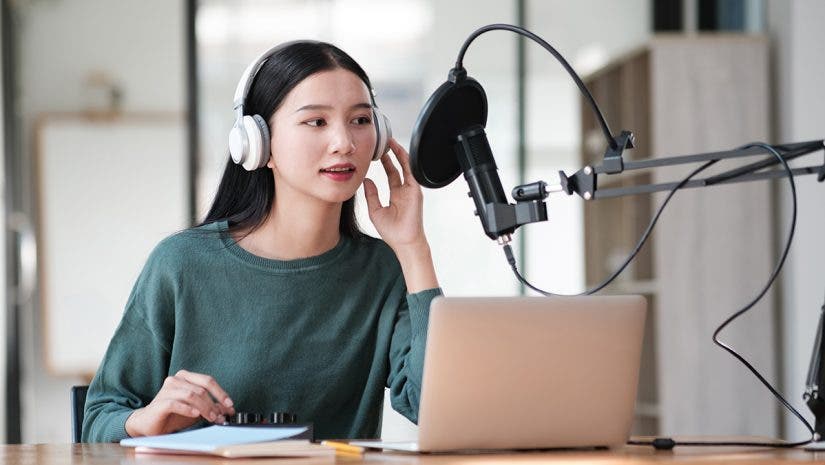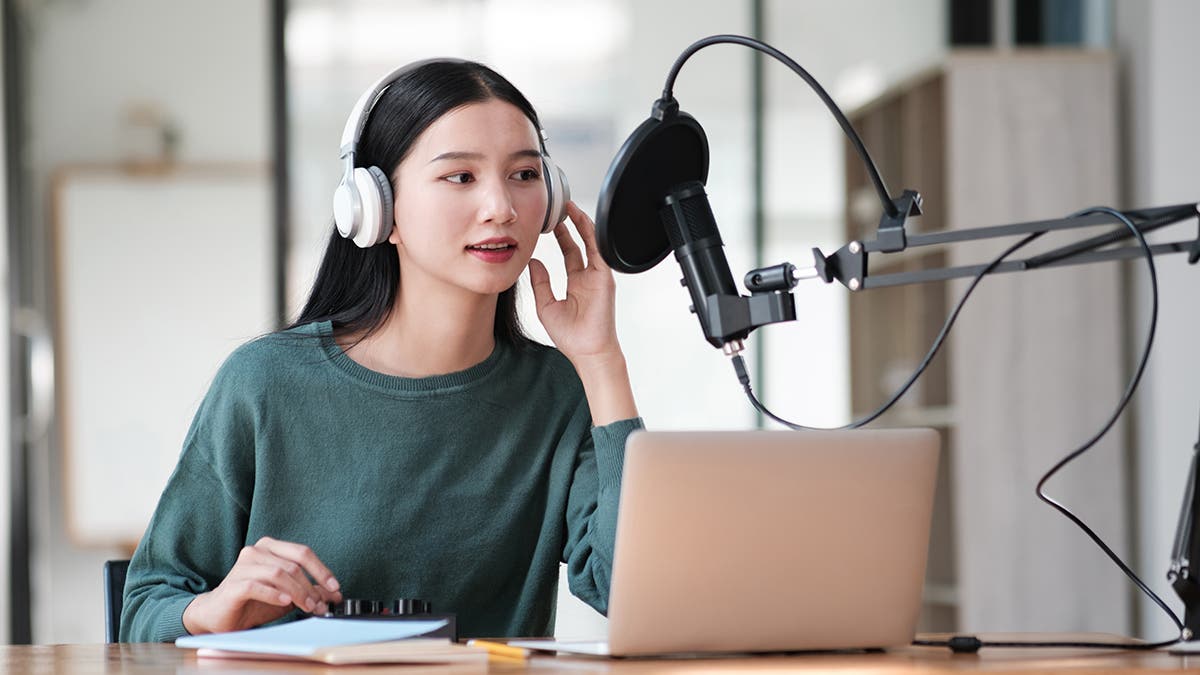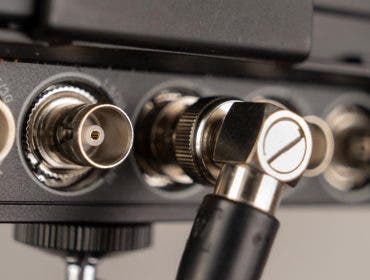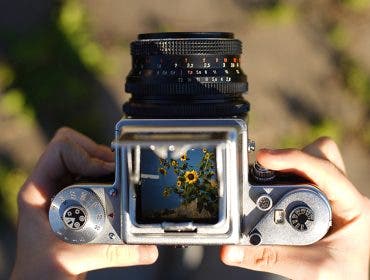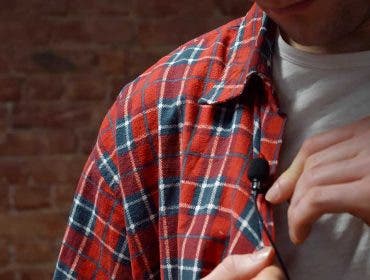High-quality voice-over is essential for audio productions, such as podcasts and video productions. This includes films, short movies, advertisements, broadcasts, YouTube videos, and social media reels. When the recording lacks quality or feels unpolished, the audience may perceive the content as unprofessional, even if it’s not. In addition, voice-over recordings are particularly susceptible to flaws; issues may arise from equipment performance, speech delivery, or environmental noise. How does one begin recording a professional voice-over without substantial investments in equipment and studio facilities? Continue reading to find out.
Why Your Content Needs Professional Voice Over
Let’s start by establishing the reasons why your content needs a professional voice-over recording. The main reason is because people are very sensitive to voices. They may decide to watch a video or movie simply because they like the voice of the narrator (e.g., try watching documentaries with Tom Hanks doing the voice-over) or quit following a podcast because they don’t like how the presenter pronounces the vocals or are triggered by excessive background noise. A muffled or difficult-to-understand voice-over is dismissed instantly.
As a result, bad voice-over is unacceptable regardless of how good your content is otherwise. Conversely, good voice-over may raise the overall quality of your production. That’s reason enough to take your voice-over recordings to the next level.
Get the Equipment Together
Professional voice-over recording requires high-quality equipment. Although any camera or smartphone comes with a built-in microphone, you don’t want to use it for voice-over. It may be good enough to record ambient sounds but not for recording voices. So, the microphone is your number one priority. Look for a dynamic microphone if you record in a noisy environment and for a condenser microphone if you want the best voice-over speech quality. Microphones may connect via USB (more affordable) or XLR (higher quality) interfaces. Consider all aspects because good microphones don’t come cheap.
Then, you may want a good pair of headphones designed for long recording hours and able to cancel noise and allow you to focus on your audio footage. They are good for both recording and editing stages, so they are a good investment.
Last but not least, consider high-quality accessories, such as a microphone stand, cables, and plugs. You may record a perfect voice-over just to have it ruined by the cable that connects the microphone to your laptop or amplifier. Here are a few of our top choices:
Neumann TLM 103 MT Cardioid Studio Condenser Microphone
The TLM 103 MT is a professional microphone with a broad range of applications, from voice-over and broadcasting to studio recordings, thanks to its wide 20- 20,000Hz frequency response and 50 Ohms output impedance. It features a large diaphragm and a cardioid polar pattern and excels at recording sound sources positioned directly in front of it. Everything that’s on the side or behind it won’t be recorded, which is extremely beneficial when recording speech.
The microphone produces a high-quality, true-to-life, balanced audio output and has extremely low self-noise and maximum gain. It comes with an SG 103 Swivel Mount for mounting on a microphone stand.
Shure SM7dB Cardioid Active Dynamic Studio Vocal Microphone
The Shure SM7dB is a dynamic microphone, meaning it performs well in noisier environments. It features an XLR interface and a built-in preamp that provides up to +28 dB of gain, which can be bypassed when not needed. For example, you can record voice-over with the preamp and louder audio (e.g., musical instruments) without it. The microphone’s cardioid pick-up pattern ensures only one sound source will be recorded.
In addition, the Shure SM7dB has a wide 50 Hz to 20,000 Hz frequency response and 150 Ohm output impedance (27 Ohm in Preamp Mode) that covers both speech and music. You will also appreciate the superior rejection of electromagnetic hum that shields the interferences, the internal “air suspension” shock isolation that eliminates mechanical noise transmission, and the pop filter that protects against explosive breath sounds.
Heil Sound PR40 Large Diameter Dynamic Cardioid Studio Microphone
The PR40 features an innovative design that aims to eliminate “popping” noises and capture human voices accurately. It features a wide 28 Hz to 18,000 Hz frequency response suitable for recording speech and music, a substantial 1-inch low mass diaphragm that ensures a smooth, flawless response throughout the entire vocal range, and a durable steel body for long-term use.
The microphone has an XLR output connection to help you create the cleanest, highest-quality voice-over recording. It comes with an adjustable cast metal microphone holder and a carry bag in case you want to broadcast from a location.
Audio-Technica AT2020USB-XP Cardioid Condenser USB Microphone
USB microphones are affordable and easy to use (they don’t need an audio interface to transform the analog signal into a digital one). The AT2020USB-XP includes a high-resolution A/D converter and supports a recording sampling rate of up to 24-bit/192 kHz. Hence, it does everything by itself and is a very good choice for beginners.
The AT2020USB-XP features a cardioid directional pick-up pattern that helps you reduce noise. In addition, it includes onboard noise reduction with three levels of control. To ensure a consistent output, the microphone is equipped with automatic gain control. And for real-time monitoring, it is equipped with a headphone jack with a high-output amplifier and volume control.
The microphone comes with a pop filter and a desk stand. It’s ready to use as soon as you take it out of the box.
Sony WH-1000XM5 Wireless Closed-Back Over-Ear Noise Cancelling Headphones
The Sony WH-1000XM5 should be in your gear kit to help you record and edit professional voice-over. You will need them for audio monitoring whilst recording, listening to test recordings, and post-processing in audio recording software. You will also need them to help you focus on recording rather than on what happens around you, hence a distraction barrier.
With an over-ear lightweight design and up to 30 hours of battery life, the Sony WH-1000XM5 provides the all-day comfort you need. They ensure distraction-free listening, exceptional audio quality, multipoint connection, and a smooth workflow thanks to an instant play/stop switch.
Set Up the Recording Space
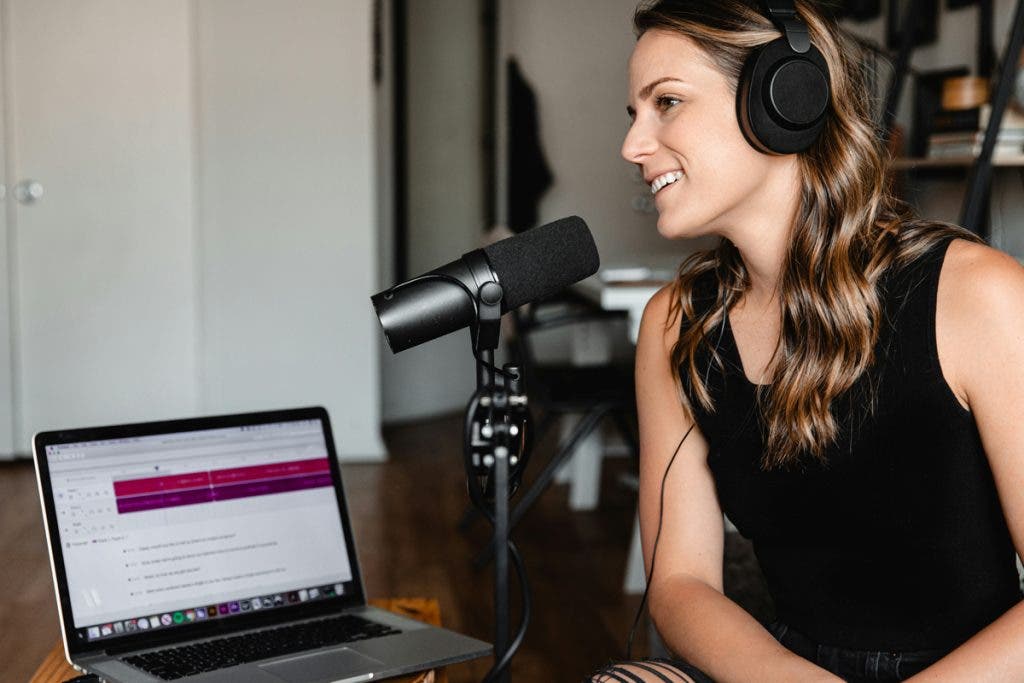
Once you have the gear, start arranging a proper recording space. You need a quiet room, free of outside noise, electronics noise, vibrations, and unwanted interruptions. Ideally, you’d have a soundproof room. Especially, try to minimize the echo. Carpets, heavy furniture, curtains, and dedicated foam panels help you with this task.
The recording setup also includes where you place the microphone (e.g., stand type, the distance from the speaker’s mouth, the surface on which it is standing, etc.). Avoid putting electronic devices on the same surface as the microphone, as it might pick up vibrations and noises. If you need to read a script, place the script behind the microphone so you don’t have to turn your head while speaking.
When you have everything in place, do a test recording and, if not satisfactory, redo the setup. It will take some fiddling until you get it right.
Learn How to Use Audio Software
Audio software helps you record and process your voice-over recordings to achieve the best quality possible. Like with any software, audio software should fit your content, workflow, and computer skills. You may want easy-to-use, free software for minimum touch-ups or professional, complex software to tackle any problem and become a long-term companion.
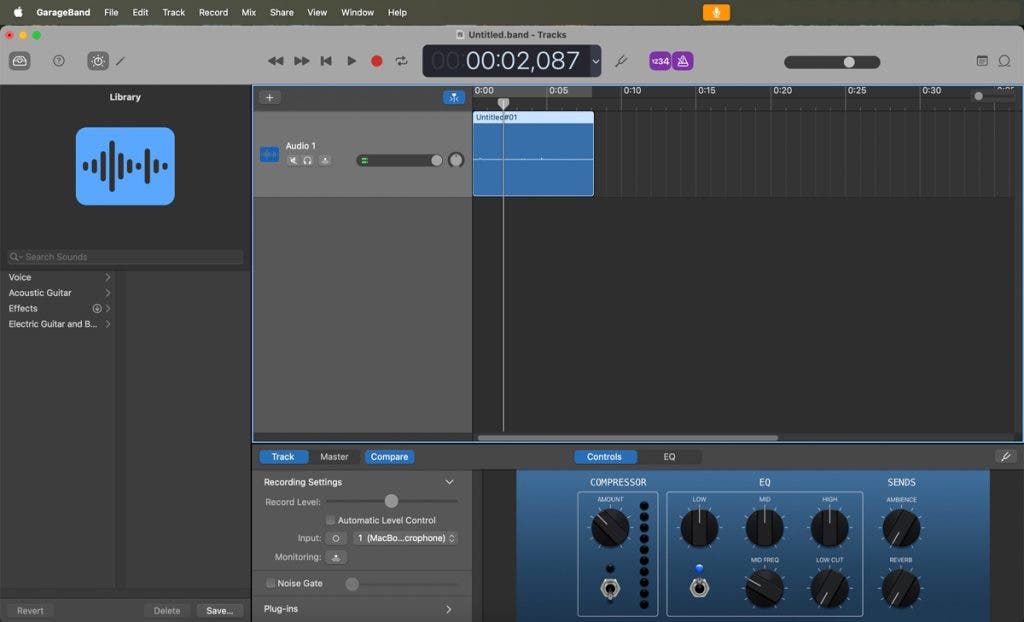
Audio software should support a wide range of audio formats, feature tools for noise and echo reduction, silence trimming, audio levels normalization, adding music or ambient sounds, and managing text and transcripts. Some options are Audiate, Audacity, Adobe Audition, Notta, RX, Logic Pro, Studio One, and GarageBand. However, some video editors, like Davinci Resolve, have an excellent audio module that have you covered if you need a seamless workflow and you are doing a voice over that needs to fit specific parts of a video.
Perfect Your Voice Over Skills
Regardless of your equipment and recording conditions, your voice-over recordings will still be amateurish if you don’t speak like a pro (remember Tom Hanks?). A professional voice-over must be clear and noiseless, yes. Still, it also must flow naturally, at a steady pace that your listener can understand, have pauses in the right places, have clear pronunciation and diction, adopt the right vocal tone, and use just enough inflection to make the discourse interesting. In addition, you must watch your emotions, breath, plosives, dry mouth, plash, speech tics, and words you tend to emphasize unnecessarily.
The distance between your mouth and the microphone influences the result, too. For example, with a cardioid polar pattern microphone, you can stay at 4-6 inches from the microphone without worrying that the mic will pick up too much noise. But if you get closer, your voice will sound deeper, louder, and more dramatic. If you stay further away, the room noise will have its part in the voice-over, which may add to or distract from the story.

You should also consider understanding the script well enough to guide the listener using the inflection of your voice. For instance, narrating a story requires a different inflection, tone, and pacing than commenting on a football game or giving step-by-step instructions. Voice-over is a bit like acting.
Final Thoughts
To sum up, mastering voice-over recording demands the right equipment and a blend of technical skill and vocal prowess. Ensure your recording setup minimizes background noise and vibrations, invest time in learning reliable audio software, and continuously refine your vocal techniques. Like any craft, becoming a pro in voice-over takes practice, patience, and a willingness to learn and adapt. Embrace the journey, and soon enough, you’ll find your voice resonating with professionalism and brilliance.
